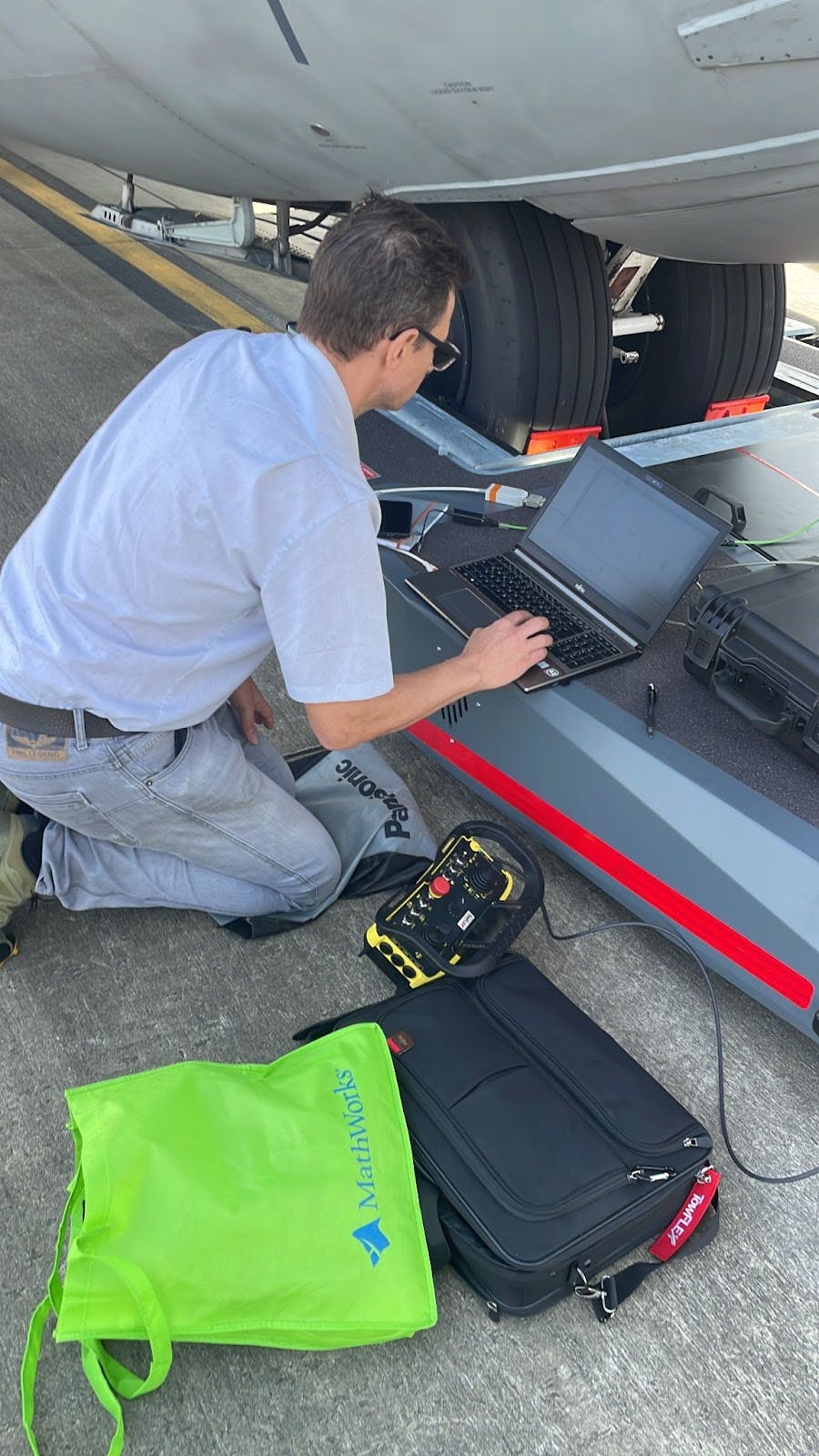
2024-8-27 16:39:0 Author: hackernoon.com(查看原文) 阅读量:3 收藏
If there’s anything we don’t pay attention to at airports, it's how airplanes move when they’re on the tarmac. We’re talking beyond the wheels, but the vehicles that help steer the planes in and out of their parking spots.
While such a thing feels so rudimentary, it's actually quickly evolving to become more sustainable, and reduce carbon emissions.
One company in Germany is changing the game when it comes to tug vehicles, the seemingly golf cart-like cars that drag or push airplanes in and around the tarmac.
One expert on this niche is Björn Rösch, the Head of Software at TowFLEXX, who walks us through the evolution of tug vehicles. Who knew that the very same vehicles that are responsible for maneuvering and parking aircraft have undergone a significant change over the past 50 years? Björn is partially responsible for ushering in the new age of tug vehicles, which is bringing the industry into the age of autonomy.
“Today, the evolution of automated tug vehicles represents the latest chapter in this history,” said Rösch, a specialist in electronically controlled steering systems for commercial and dual-use vehicles. Having worked as a programmer for steering systems at Mobil Elektronik in the 1990s, to founding an electronics development department at a space and aviation firm called PHBTronics, he is no stranger to designing zero-emission shunting vehicles, and has worked with TowFLEXX since 2018.
“Companies are leading the charge with electric, remote-controlled, and increasingly autonomous tugs,” he adds.
“These modern vehicles address contemporary challenges such as the need for cost efficiency, reduced environmental impact, and enhanced safety in airport operations.”
So when did tug vehicles begin? It all started in the 1940s, as tug vehicles were originally adapted from early military and industrial tractors (yes, you read that right, tractors). These early models were pretty simple and manually operated (obviously) machines that were clunky and took up too much space. But they evolved, just as the aviation industry did.
In the Postwar Era, the need for more specialized tug vehicles increased. “They needed to maneuver around the tarmac more easily, but also handle larger aircraft,” said Rösch. “But they still needed a driver behind the wheel.” For a time, the industry remained in a holding pattern with slightly more nimble but still cumbersome tractors being the main form of these tug vehicles.
It wasn’t until the 1990s that we saw real innovation with tug vehicles, as there was a significant shift away from the older vehicles. “This shift,” Rösch notes, “began with towbarless tugs, which eliminated the need for specific towbars for different aircraft.” This was a massive change and helped to streamline the process. It also helped smooth over the process for all ground operations of aircraft. The next and exciting step in the evolution of tug vehicles came in the 2000s with the move towards autonomous technology in the tow vehicles.
“This progression is driven by the growing complexity of modern airport operations and environments, and the industry's push for greener, more efficient technologies, ultimately setting the stage for a future where fully autonomous ground handling operations of aircraft become the norm,” he said.
This move towards integrating autonomous technology is the new standard. With Rösch’s dedication to innovation there has been a decided move towards electric, remote-controlled and autonomous tugs. These modern vehicles help to reduce environmental and sound impact, increase maneuverability and increase efficiency at airports globally, so aircraft can get out and up in the air easily and effortlessly.
Getting a tug to push an aircraft from the gate to the taxiway – an aircraft that weighs thousands of pounds – is no easy feat, especially in tiny airports, or even worse, on a US Navy seaplane barge. That’s where autonomous tug vehicles come in – to save space. “Instead of turning the nose landing gear of the aircraft by moving the aircraft forwards or backwards with extreme caution to prevent oversteering of the nose landing gear (NLG) and avoid damage, our technology rotates tug vehicles 360° around the NLG.”
It’s no surprise that airports are ushering in the next generation of electric vehicles to help assist aircraft, while reducing carbon emissions. They can “ultimately increase to use a hangar space up to 40% more,” said Rösch.
Yes, the shift to electric power in tugs is a given. “It aligns with the global trend toward sustainability, offering zero emissions and reduced noise pollution,” he said.” This not only meets increasing environmental regulations but also supports the aviation industry's broader goals of reducing its carbon footprint. Additionally, electric vehicles tend to have lower maintenance costs and increased reliability, ensuring higher uptime and reduced operational disruptions.”
Who knew that towbarless tug vehicles have been an integral part of military, aviation schools, the US Navy and more for over a decade? These tug vehicles have been helping to get them (and their planes) up to speed with increasing effeciency.
So what’s next for tug vehicles, you ask?
“Future generations of tug vehicles are poised to include AI-powered autonomy, ultimately enabling autonomous towing of aircraft, which will mark a significant leap forward in airport ground handling,” said Rösch.
“As the aerospace and defense industry seeks to enhance efficiency, safety, and sustainability, these autonomous tugs are set to play a crucial role in the future,” he adds. “The next, more immediate stages of tug vehicles, however, will be stepping stones towards full autonomy, providing semi-autonomous features for ground handling operations of aircraft at first.”
如有侵权请联系:admin#unsafe.sh
